Eye of the Sea
Thief 2 Fan Mission
Wide Linear, Stealth, Exploration
4 Month Solo Project
Released January 28, 2025
Eye of the Sea is a fully complete, ~0.5-1 hour long level for Thief 2 (2000) that encourages careful stealth and creative navigation. Players fill the role of a thief sent by the mysterious Keepers to find a lost relic in a temple hidden beneath a noble's vacation island home. To the player's surprise, a band of pirates arrived before them and are actively raiding the island, and the player must prove themselves the better thief.
Download here (Requires a NewDark-patched copy of Thief 2. Find more info here.).
See player reaction and discussion here. Player opinion was positive, with many players appreciating the secret-filled level design, subtle storytelling, and level scripting.








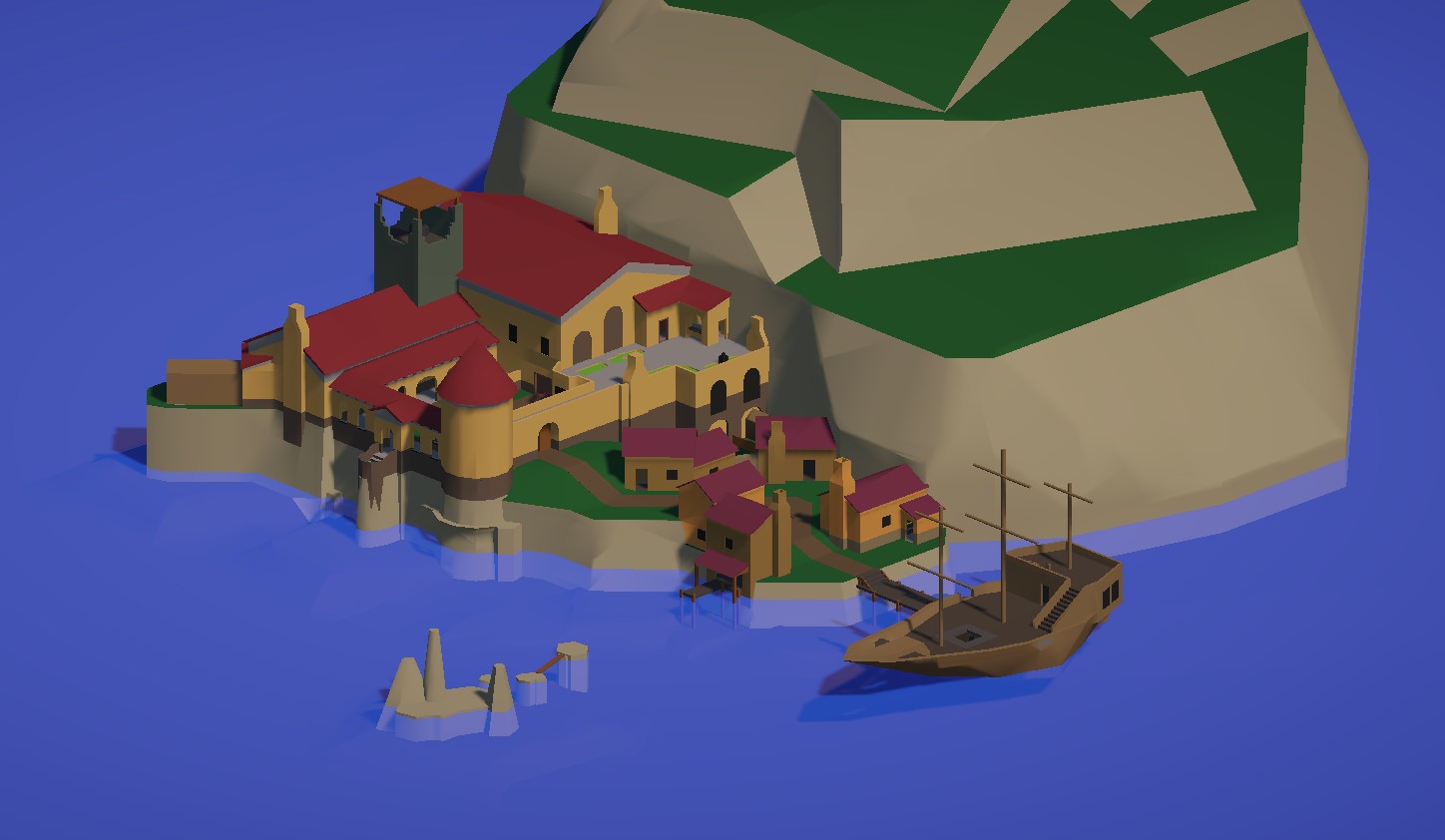
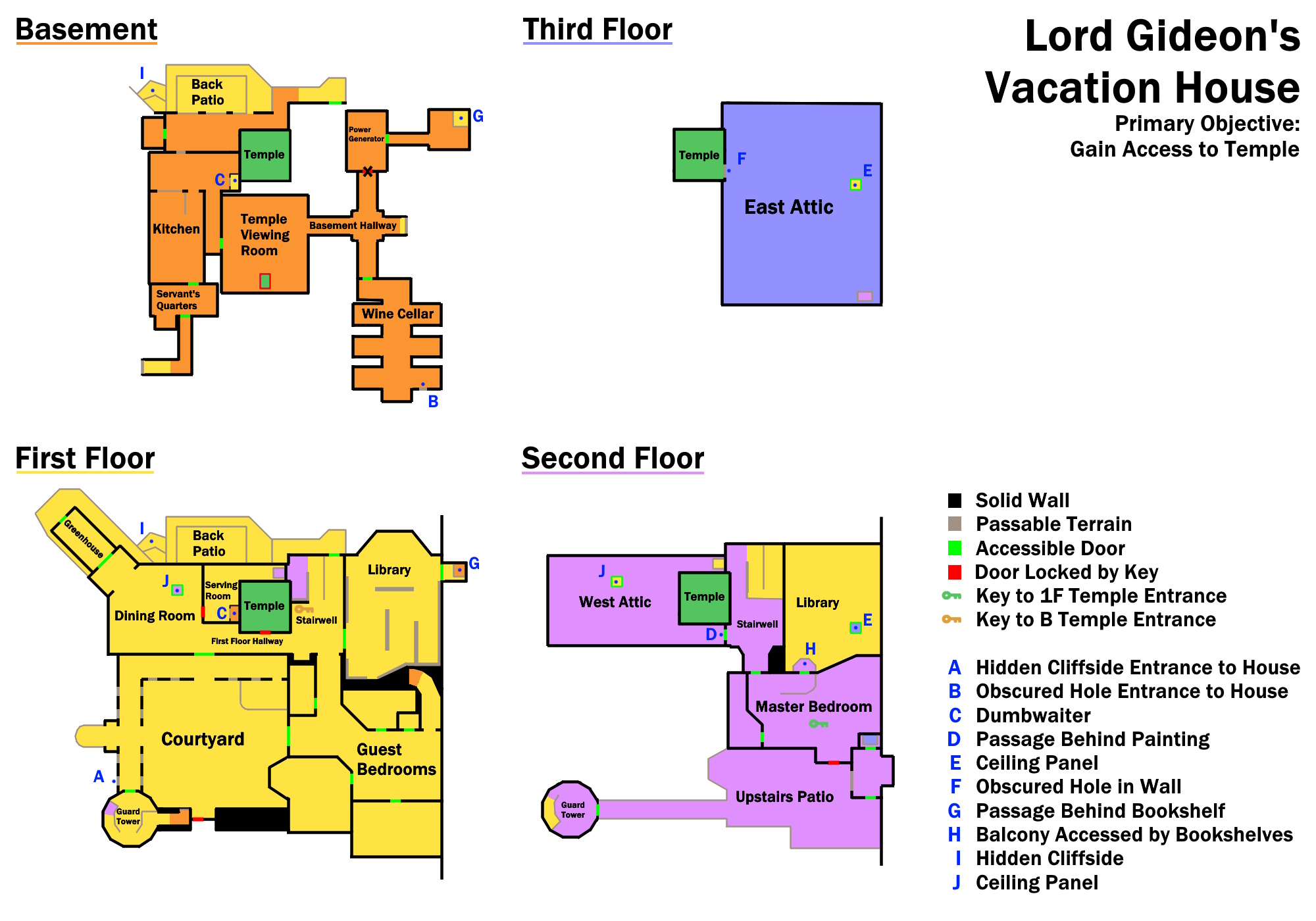

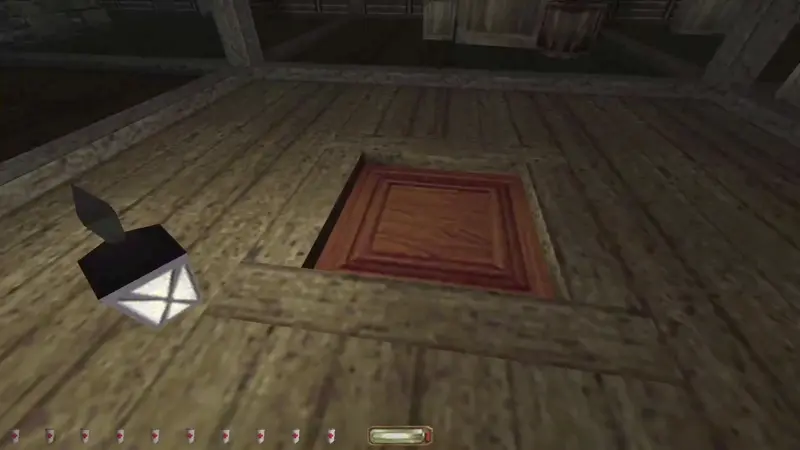
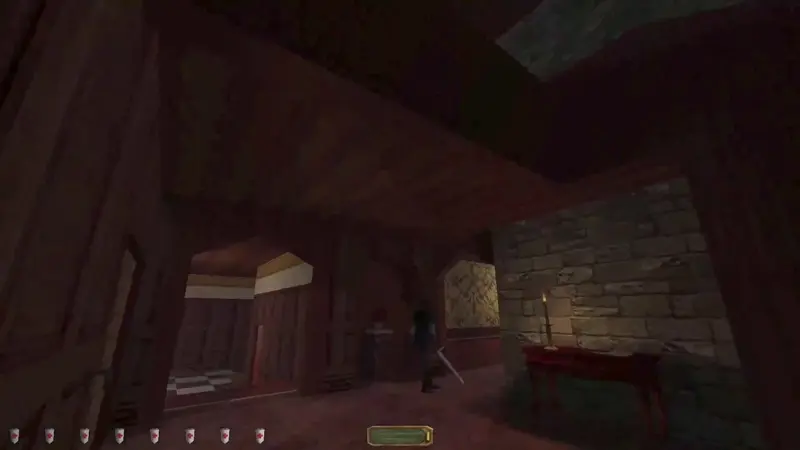
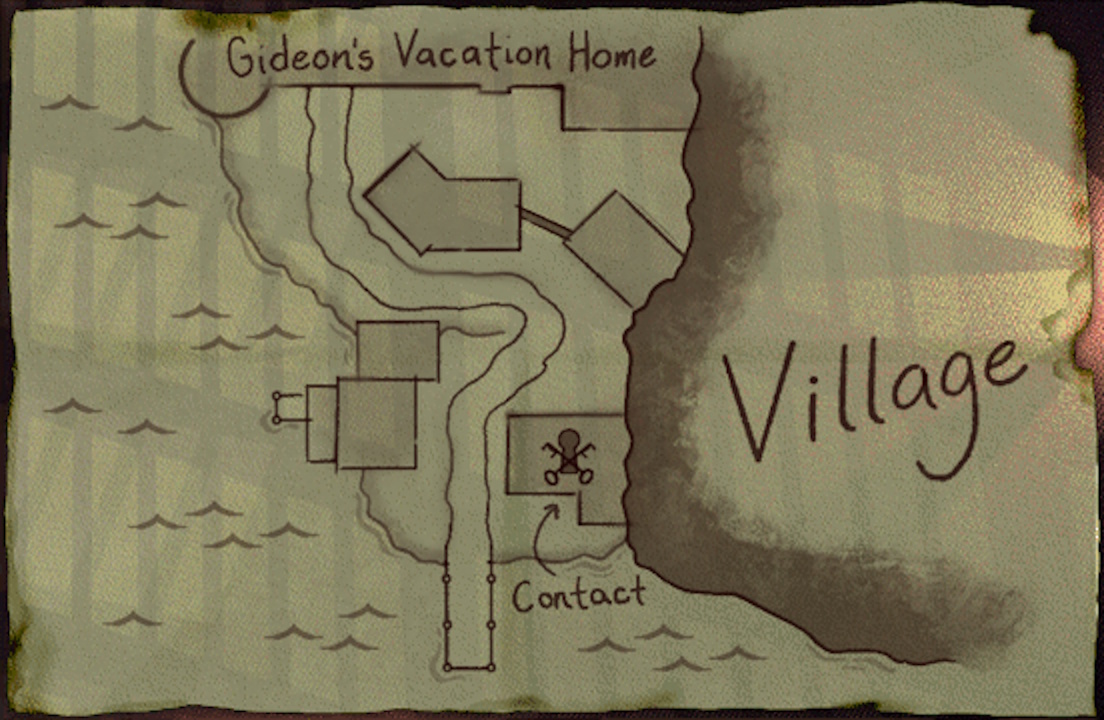
Design and Process
Thief 2 is a systems-heavy game who's levels are open-ended, exploration driven and focus on stealth and navigation as primary challenges. More contemporary comparisons include Dishonored, DEATHLOOP, Deus Ex, and Gloomwood. Having made one Thief 2 level prior, this was my opportunity to apply all I learned from the get-go.
The level is complex, featuring many possible golden paths and a number of extra spaces to explore in the pursuit of side objectives and a better loot score. It's also dynamic, featuring two major events that dramatically change the playing field, along with the usual systemic elements of Thief.
Layout Design
Before I jumped into the editor I planned the level via text, focusing on objectives and narrative. I then entered a cycle of sketching up layouts and implementing them with gameplay for the three distinct zones one at a time.
Check out a PDF of my plans and sketches here.
The player begins in the open ended and relatively easy village where they can optionally explore the homes and pirates' ship.
Once they find one of several ways into the house, the space becomes tighter, more complex, and heavily patrolled by pirates. The way to the temple is locked and the player can either go to where the key is stated to be or find one of two less obvious routes into the temple.
The temple is tighter and more linear, acting as a challenging choke point for stealth. Once the player obtains the Eye, a new form of enemy appear and the player must backtrack through a more hostile version of familiar territory.
The level offers players a number of subversive routes that help the player navigate the space undetected. They include, but aren't limited to, secret doors behind bookshelves and paintings, hidden gaps in walls, attics, and open windows. These reinforce the stealth fantasy and are a compelling reward for exploration.
The level is strongly imageable, utilizing asymmetry and distinct zones to help players build a strong memory of the complex space. To ensure imageability, all but the last round of playtesting was done without any in-game map for reference.
Gameplay Design
Implemented as parts of the layout were completed, gameplay involved stealth interactions with enemy NPCs, using opportunistic navigation tools, puzzle solving, treasure collecting, and special objectives.
The primary objective, stealing the Eye, can be split into three main parts. First the player must gain access to the house, then the player must gain access to the temple, and finally the player must go through the temple and solve a puzzle to reach and steal the Eye.
Optional objectives include finding a light bulb in order to get the island's lighthouse back on and finding a rare navigation globe in one of the attics. Per Thief convention, players are also incentivized to find as many small loot items as they can.
One of the major dynamic moments is that when the player steals the Eye, invulnerable ghost enemies appear and kill the pirates, replacing them and posing a greater challenge. The player is introduced to them and their invincibility by being able to see the first few ghosts fight the pirates.
The second major dynamic change is a secret passageway in the library that leads the player to the generator room, who's door is otherwise blocked from the inside by a servant who survived the raid. In here, the player can disable the generator, killing all electric lights in the level and giving the player an advantage in stealth.
As a special interactive treat, there's a fully playable minigolf course in the vacation home. The equivalent to the traditional windmill is Angelwatch, a key location from the original game.
Narrative and Hooks
The player is a thief hired by the Keepers to obtain an artifact called the Eye of the Sea from an island temple. Lord Gideon, a navyman who conquered the island years before but failed to find the Eye, has built his vacation home around the temple. When the player arrives, they are meant to meet with an agent in the village below, but find the island being actively raided by a crew of pirates.
Through readables and environmental storytelling, the player is able to piece together the rest of the story, which involves a dark sea god's eye having been stolen by the islanders' ancestors and a corrupted crew of the expeditionary navy (the afformentioned pirates) having been cursed to return the Eye to its owner. The Keepers have sent you to make sure that doesn't happen.
The narrative features hooks that explore the fantasy of being a master thief:
- 1. The player gets to connect with Thief's underworld by sneaking into the village and searching for their contact.
- 2. The player is a better thief than the pirates. They resort to stealth, require less assistance, and they may not even need to use violence to obtain the Eye. There is also a puzzle in the temple that the pirates are unable to solve, but the player is.
- 3. The player is an uninformed pawn in a larger conflict and gets to overcome this by putting together the clues of the story themselves.
Playtesting
Throughout the course of this project, I had twelve different testers. Testers included other level designers, long-time Thief fans, and a few people newer to Thief.
Having testers with varying experience gave me access to a wider variety of feedback. Testers were introduced at different stages of development to ensure I regularly had players going in blind. I observed gameplay tests and took detailed notes, which I would then filter into action items to complete before another round of testing. You can see my notes and action items here
The difficulty of the level was ultimately crafted around the long-time Thief fans as they best represented my practical playerbase upon release. Several were vital to the final rounds of QA testing as they were well qualified to find exploits and bugs.